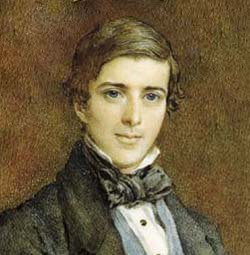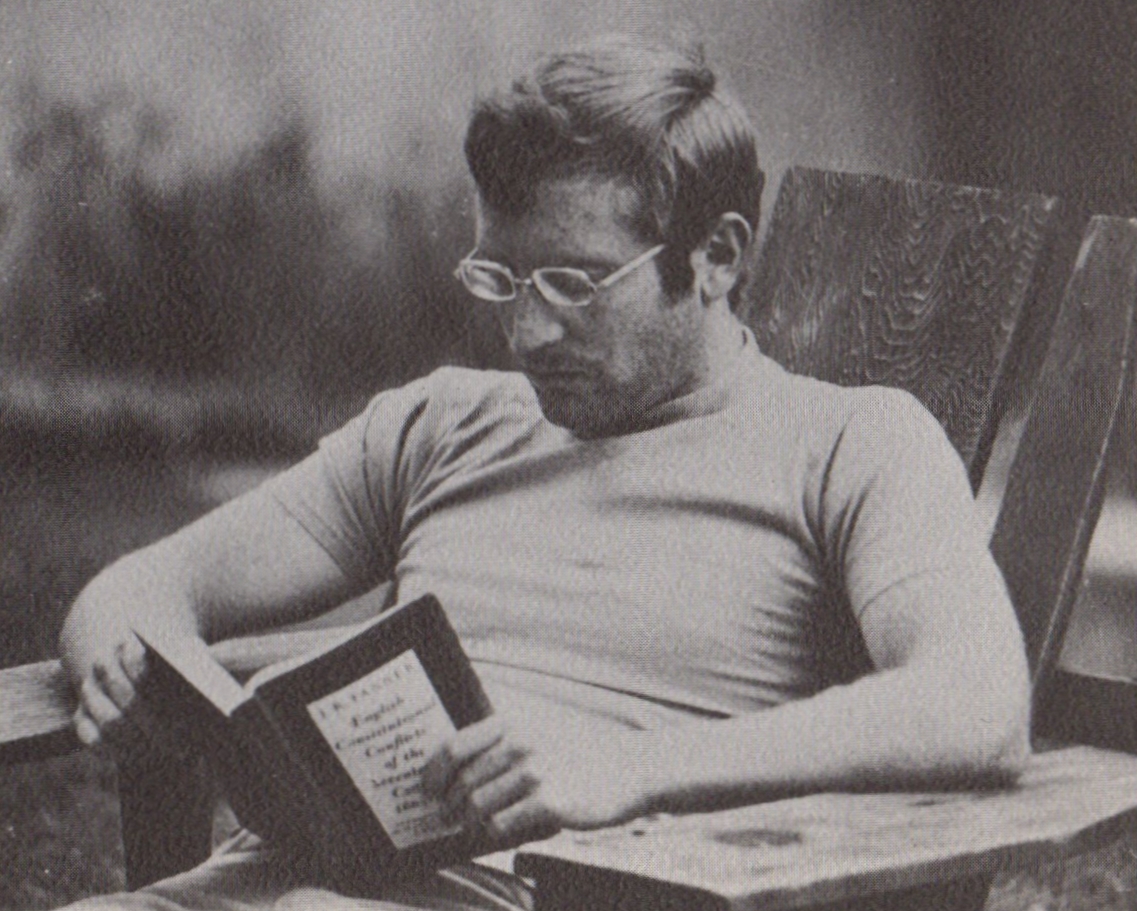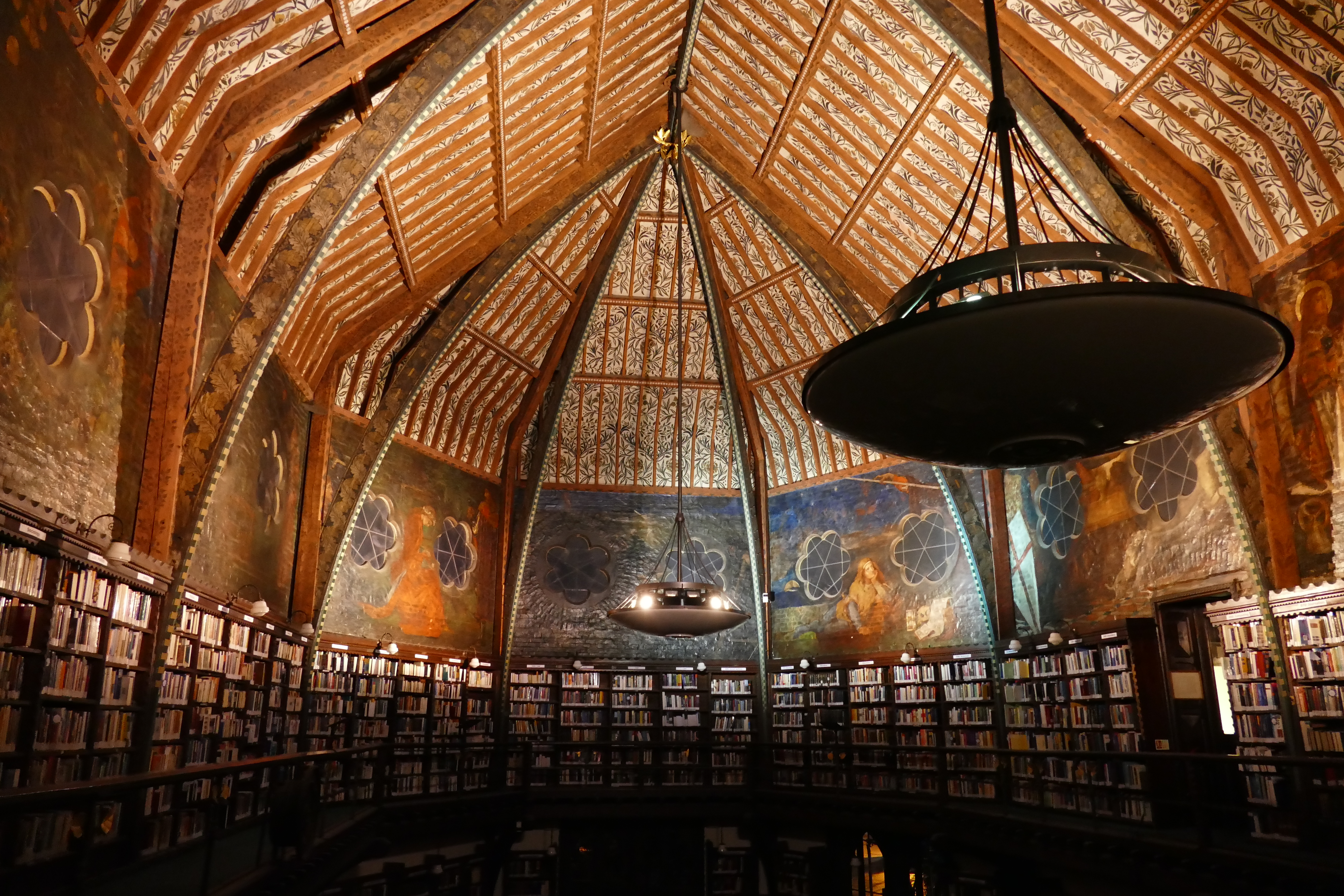|
Frederick James Quick
Frederick James Quick (22 October 1836 — 21 December 1902) was a wholesale dealer in tea and coffee in the City of London, chairman of the firm Quick, Reek, and Smith. He left most of his fortune to the University of Cambridge to promote the interests of biology and botany, which led to the establishment in 1906 of the Quick Chair in Biology. Early life Quick was born in London in 1836, the second son of James Carthew Quick, a wholesale coffee dealer, and was baptized at St Giles's, Camberwell, on 18 November. He was educated at Harrow School, from 1851 to 1855, and then at Trinity Hall, Cambridge, where he arrived in October 1855 and graduated Bachelor of Arts on 29 January 1859. He then studied for the Bar at the Inns of Court and was admitted as a barrister. Finally, he learned farming at St Andrews, and his father bought land for him at Woodmancote, West Sussex.George Nuttall, "Frederick James QUICK (1836–1902), a Biographical Note, with portrait" in ''Parasitology'' (19 ... [...More Info...] [...Related Items...] OR: [Wikipedia] [Google] [Baidu] |
City Of London
The City of London is a city, ceremonial county and local government district that contains the historic centre and constitutes, alongside Canary Wharf, the primary central business district (CBD) of London. It constituted most of London from its settlement by the Romans in the 1st century AD to the Middle Ages, but the modern area named London has since grown far beyond the City of London boundary. The City is now only a small part of the metropolis of Greater London, though it remains a notable part of central London. Administratively, the City of London is not one of the London boroughs, a status reserved for the other 32 districts (including Greater London's only other city, the City of Westminster). It is also a separate ceremonial county, being an enclave surrounded by Greater London, and is the smallest ceremonial county in the United Kingdom. The City of London is widely referred to simply as the City (differentiated from the phrase "the city of London" by capita ... [...More Info...] [...Related Items...] OR: [Wikipedia] [Google] [Baidu] |
Church Of England
The Church of England (C of E) is the established Christian church in England and the mother church of the international Anglican Communion. It traces its history to the Christian church recorded as existing in the Roman province of Britain by the 3rd century and to the 6th-century Gregorian mission to Kent led by Augustine of Canterbury. The English church renounced papal authority in 1534 when Henry VIII of England, Henry VIII failed to secure a papal annulment of his marriage to Catherine of Aragon. The English Reformation accelerated under Edward VI of England, Edward VI's regents, before a brief Second Statute of Repeal, restoration of papal authority under Mary I of England, Queen Mary I and Philip II of Spain, King Philip. The Act of Supremacy 1558 renewed the breach, and the Elizabethan Settlement charted a course enabling the English church to describe itself as both English Reformation, Reformed and Catholicity, Catholic. In the earlier phase of the Eng ... [...More Info...] [...Related Items...] OR: [Wikipedia] [Google] [Baidu] |
St James's Gazette
The ''St James's Gazette'' was a London evening newspaper published from 1880 to 1905. It was founded by the Conservative Henry Hucks Gibbs, later Baron Aldenham, a director of the Bank of England 1853–1901 and its governor 1875–1877; the paper's first editor was Frederick Greenwood, previously the editor of the Conservative-leaning ''Pall Mall Gazette''. The ''St James's Gazette'' was bought by Edward Steinkopff, founder of the Apollinaris mineral water company, in 1888. Greenwood left, to be succeeded by Sidney Low (1888–1897), Hugh Chisholm (1897–1899) and Ronald McNeill (1900–1904). Steinkopff sold the paper to C. Arthur Pearson in 1903, who merged it with the ''Evening Standard'' in March 1905, ending the paper's daily publication. A weekly digest of the paper, the ''St James's Budget'', appeared from 3 July 1880 until 3 February 1911. History Background The ''St James's Gazette'' was founded in 1880 out of the ''Pall Mall Gazette'', which was (in the phr ... [...More Info...] [...Related Items...] OR: [Wikipedia] [Google] [Baidu] |
Joseph Robson Tanner
Joseph Robson Tanner (28 July 1860 – 15 January 1931) was an English historian, an expert on Samuel Pepys, author of numerous publications and Fellow of St John's College, Cambridge. Life Tanner was born in Frome, Somerset, the eldest son of Joseph Tanner. He was educated at Mill Hill School, London, and at St John's College, Cambridge, where he took a First in the Historical Tripos in 1882. He was President of the Cambridge Union Society in Easter Term, 1883. He was a lecturer in History at St John's, from 1883 to 1921, and lecturer on Indian History to Indian Civil Service students, from 1885 to 1893. In 1883 Tanner became a Fellow of St John's and was an Assistant Tutor from 1895 to 1900, a Tutor from 1900 to 1912, and Tutorial Bursar, 1900–21. He served as a deputy to the Regius Professor of Modern History, 1926–27.''Who Was Who'', III, 1929–40, London : A. & C. Black, 2nd ed., 1967, 1324–25. In 1888 Tanner married Charlotte Maria, second daughter of George J. Lark ... [...More Info...] [...Related Items...] OR: [Wikipedia] [Google] [Baidu] |
Probate
Probate is the judicial process whereby a will is "proved" in a court of law and accepted as a valid public document that is the true last testament of the deceased, or whereby the estate is settled according to the laws of intestacy in the state of residence of the deceased at time of death in the absence of a legal will. The granting of probate is the first step in the legal process of administering the estate of a deceased person, resolving all claims and distributing the deceased person's property under a will. A probate court decides the legal validity of a testator's (deceased person's) will and grants its approval, also known as granting probate, to the executor. The probated will then becomes a legal instrument that may be enforced by the executor in the law courts if necessary. A probate also officially appoints the executor (or personal representative), generally named in the will, as having legal power to dispose of the testator's assets in the manner specified in the ... [...More Info...] [...Related Items...] OR: [Wikipedia] [Google] [Baidu] |
Barrister
A barrister is a type of lawyer in common law jurisdictions. Barristers mostly specialise in courtroom advocacy and litigation. Their tasks include taking cases in superior courts and tribunals, drafting legal pleadings, researching law and giving expert legal opinions. Barristers are distinguished from both solicitors and chartered legal executives, who have more direct access to clients, and may do transactional legal work. It is mainly barristers who are appointed as judges, and they are rarely hired by clients directly. In some legal systems, including those of Scotland, South Africa, Scandinavia, Pakistan, India, Bangladesh, and the British Crown dependencies of Jersey, Guernsey and the Isle of Man, the word ''barrister'' is also regarded as an honorific title. In a few jurisdictions, barristers are usually forbidden from "conducting" litigation, and can only act on the instructions of a solicitor, and increasingly - chartered legal executives, who perform tasks ... [...More Info...] [...Related Items...] OR: [Wikipedia] [Google] [Baidu] |
Royal Borough Of Greenwich
The Royal Borough of Greenwich (, , or ) is a London boroughs, London borough in southeast Greater London. The London Borough of Greenwich was formed in 1965 by the London Government Act 1963. The new borough covered the former area of the Metropolitan Borough of Greenwich and part of the Metropolitan Borough of Woolwich to the east. The local council is Greenwich London Borough Council which meets in Woolwich Town Hall. The council's offices are also based in Woolwich, the main urban centre in the borough. Greenwich is the location of the Prime meridian (Greenwich), Greenwich prime meridian, on which all Coordinated Universal Time is based. The prime meridian running through Greenwich and the Greenwich Observatory is where the designation Greenwich Mean Time, or GMT began, and on which all world times are based. In 2012, Greenwich was listed as a top ten global destination by Frommer's – the only UK destination to be listed. To mark the Diamond Jubilee of Elizabeth II, Green ... [...More Info...] [...Related Items...] OR: [Wikipedia] [Google] [Baidu] |
Kent
Kent is a county in South East England and one of the home counties. It borders Greater London to the north-west, Surrey to the west and East Sussex to the south-west, and Essex to the north across the estuary of the River Thames; it faces the French department of Pas-de-Calais across the Strait of Dover. The county town is Maidstone. It is the fifth most populous county in England, the most populous non-Metropolitan county and the most populous of the home counties. Kent was one of the first British territories to be settled by Germanic tribes, most notably the Jutes, following the withdrawal of the Romans. Canterbury Cathedral in Kent, the oldest cathedral in England, has been the seat of the Archbishops of Canterbury since the conversion of England to Christianity that began in the 6th century with Saint Augustine. Rochester Cathedral in Medway is England's second-oldest cathedral. Located between London and the Strait of Dover, which separates England from mainla ... [...More Info...] [...Related Items...] OR: [Wikipedia] [Google] [Baidu] |
Eltham
Eltham ( ) is a district of South London, southeast London, England, within the Royal Borough of Greenwich. It is east-southeast of Charing Cross, and is identified in the London Plan as one of 35 major centres in Greater London. The three wards of Eltham North, South and West have a total population of 35,459. 88,000 people live in Eltham. History Origins Eltham developed along part of the road from London to Maidstone, and lies almost due south of Woolwich. Mottingham, to the south, became part of the parish on the abolition of all extra-parochial areas, which were rare anomalies in the parish system. Eltham College and other parts of Mottingham were therefore not considered within Eltham's boundaries even before the 1860s. From the sixth century Eltham was in the ancient Lathe of Sutton at Hone. In the Domesday Book of 1086 its hundred was named ''Gren[u/v]iz'' (Greenwich), which by 1166 was renamed ''Blachehedfeld'' Blackheath, Kent (hundred), (Blackheath) because i ... [...More Info...] [...Related Items...] OR: [Wikipedia] [Google] [Baidu] |
1901 United Kingdom Census
The United Kingdom Census 1901 was the 11th nationwide census conducted in the United Kingdom of Great Britain and Ireland, and was done on 31st March 1901 "relating to the persons returned as living at midnight on Sunday, March 31st". The total population of the England and Wales, Scotland, and Ireland (including what is now the Republic of Ireland) was 41,458,721 of which 21,356,313 were female and 20,102,406 were male. The foreign-born population was recorded at 1.4% Geographic scope It was divided into three parts: England and Wales, Scotland, and Ireland. The census in England, Wales and Scotland was legislated for by the Census (Great Britain) Act 1900. The England and Wales part of the census contains records for 32 million people and 6 million houses. Certain parts of the records have suffered damage and therefore some information is missing, but it is largely complete with the exception of parts of Deal in Kent. The census of England and Wales does not include ... [...More Info...] [...Related Items...] OR: [Wikipedia] [Google] [Baidu] |
James Edward Rogers
James Edward Rogers (1838 – 18 February 1896) was an Irish artist, architect, and book-illustrator whose early career was in Dublin. In 1876 he moved to London, where he is believed to have worked only as an artist. Early life Born in Dublin, Rogers was the son of James Rogers, a barrister and Queen's Counsel. His early education was there, then he attended the Royal Grammar School, Guildford, before joining Trinity College Dublin, where he matriculated on 2 July 1855, aged seventeen. He was taken as a pupil by Benjamin Woodward, a notable Irish architect who was suffering from tuberculosis.Frederick O'Dwyer, ''The Architecture of Deane and Woodward'' (1997), pp. 288, 395–401 Woodward was in the process of designing the Oxford Museum and the debating hall of the Oxford Union, both of which Rogers visited."ROGERS, ... [...More Info...] [...Related Items...] OR: [Wikipedia] [Google] [Baidu] |
1881 United Kingdom Census
The United Kingdom Census of 1881 recorded the people residing in every household on the night of Sunday 3 April 1881, and was the fifth of the UK censuses to include details of household members. Data recorded Details collected include: address, name, relationship to the head of the family, marital status, age at last birthday, gender, occupation, and place of birth. As with earlier censuses, the form asked whether any "lunatics", "imbeciles" or "idiots" lived in the household, causing the Registrar General to observe that: "It is against human nature to expect a mother to admit her young child to be an idiot, however much she may fear this to be true. To acknowledge the fact is to abandon all hope." The total population of England, Wales and Scotland was recorded as 29,707,207. Notable respondents included Winston Churchill, Karl Marx and Charles Darwin. Indexing The 1881 census was the first UK census to be indexed in its entirety. In the 1980s, in a project that has been c ... [...More Info...] [...Related Items...] OR: [Wikipedia] [Google] [Baidu] |







